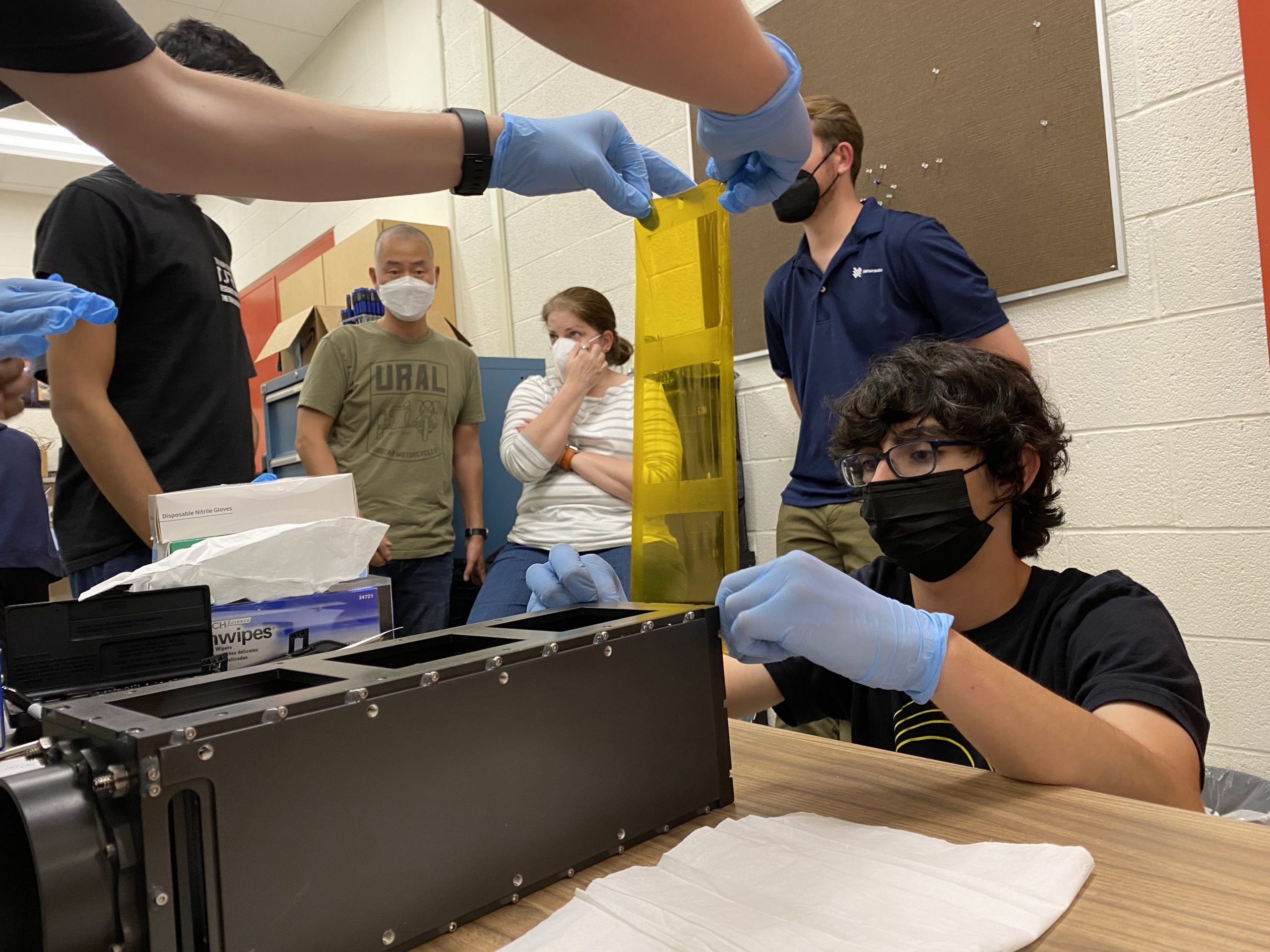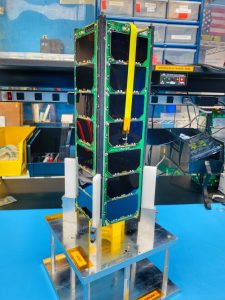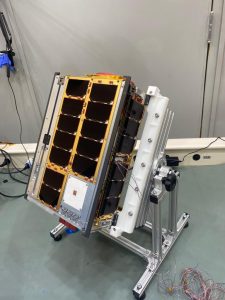
Four small, shoebox-sized satellites are being prepared to launch to the International Space Station as part of NASA’s Educational Launch of Nanosatellites (ELaNa) 49 mission. The small satellites, called CubeSats, will study a range of topics – from satellite communication methods to space weather to testing technology for robotic assembly of large telescopes.
The CubeSats will hitch a ride on the SpaceX Falcon 9 rocket and Dragon spacecraft set to deliver additional science, crew supplies, and hardware to the station during the company’s 26th commercial resupply services mission for NASA. Launch is targeted at 4:19 p.m. EST from Launch Complex 39A at the agency’s Kennedy Space Center in Florida.
Satellite Communications

The first U.S. high school to send a CubeSat to space back in 2013, Thomas Jefferson High School for Science and Technology’s Research and Education Vehicle for Evaluating Radio Broadcasts satellite aims to study the use of iridium as a primary radio communication method. Additionally, the satellite will demonstrate using a passive magnet onboard and the Earth’s magnetic field for stabilization rather than using an attitude determination and control system for pointing accuracy and stabilization for iridium. What makes this satellite even more notable is that it was a system’s engineering project. The students selected space-grade parts, wired the electronics for the satellite, wrote the drivers to control the different systems, and coded the flight software.
“What’s special about TJREVERB isn’t necessarily the mission, it’s what we did. These kids literally built a satellite the way the industry would build a satellite; we selected parts from vendors and got those parts to work together,” said Kristen Kucko, robotics lab director and the school’s space faculty advisor. “This is an engineering feat.”
Structure Testing
The University of Michigan’s Measurement of Actuator Response In Orbit (MARIO) is a technology demonstration that will show how test structures made of a piezoelectric material – a type of material that bends when electricity is applied and can also generate electricity when bent – perform in low-Earth orbit. This will allow the spacecraft to bend or move without any rotating parts and could one day be used to point and adjust telescope mirrors more accurately.
Space Weather

NASA Goddard Space Flight Center’s Plasma Enhancement in The Ionosphere-Thermosphere Satellite (petitSat) will study density irregularities in the Earth’s ionosphere – a tiny fraction of the atmosphere made of plasma, or ionized gas. During long distance radio communication, the ionosphere reflects radio waves back to Earth. Disturbances in the upper atmosphere can change the shape of the ionosphere, creating a funhouse mirror effect and distorting these radio waves. The mission will use two instruments to measure the structure and motion of plasma in the ionosphere resulting from these changes in the upper atmosphere to better understand how these affect satellite communications.
NASA Marshall Space Flight Center’s Scintillation Prediction Observations Research Task (SPORT) will also look to the ionosphere to study space weather. The joint mission between the U.S. and Brazil will examine the formation of plasma bubbles, which sometimes scatter radio signals. Understanding how these bubbles are formed and how their evolution impacts communication signals can help scientists improve the reliability of communication and navigation systems.
“The more we learn about space weather – and how to predict it – the better we can protect our astronauts, spacecraft, and technology,” said Shelia Nash-Stevenson, SPORT project manager.
All of these were selected through NASA’s CubeSat Launch Initiative (CSLI), which provides U.S. educational institutions, nonprofits with an education/outreach component, informal educational institutions (museums and science centers), and NASA centers with access to space at a low cost. Once the CubeSat selections are made, NASA’s Launch Services Program works to pair them with a launch that is best suited to carry them as auxiliary payloads, taking into account the planned orbit and any constraints the CubeSat missions may have.
For more information about NASA’s CSLI, visit:
https://www.nasa.gov/directorates/heo/home/CubeSats_initiative
